I want to close the existing connections to an MS SQL Server so that I can do a restore on that database programatically.
-
1Possible duplicate: [How do you kill all current connections to a SQL Server 2005 database?](http://stackoverflow.com/questions/11620/how-do-you-kill-all-current-connections-to-a-sql-server-2005-database) – zimdanen Apr 30 '12 at 17:47
7 Answers
This should disconnect everyone else, and leave you as the only user:
alter database YourDb set single_user with rollback immediate
Note: Don't forget
alter database YourDb set MULTI_USER
after you're done!
- 4,065
- 2
- 33
- 40
- 232,371
- 49
- 380
- 404
-
20Don't forget `ALTER DATABASE YourDb SET MULTI_USER` after you're done! – Tyler Forsythe Feb 08 '16 at 16:55
-
Apparantly, the first statement does not always work to drop all connections. At least not for me. I had to kill the process that was connected to the database first. – TT. Apr 13 '18 at 12:25
-
4I am now past this problem. I read [here](https://dba.stackexchange.com/a/157921/65699) that using the following statement might help in my situation: `Alter database your_db_name set OFFLINE with rollback immediate` – TT. Apr 13 '18 at 12:34
in restore wizard click "close existing connections to destination database"
in Detach Database wizard click "Drop connection" item.
- 913
- 11
- 20
-
1
-
2For those that are wondering why the option isn't always available, there's a workaround. If you go to the options tab BEFORE doing anything else and check the "Close existing connections" checkbox before doing any other operations in the restore dialog, it seems to work around the option being grayed out. – Grady Werner Dec 07 '18 at 17:54
Found it here: http://awesomesql.wordpress.com/2010/02/08/script-to-drop-all-connections-to-a-database/
DECLARE @dbname NVARCHAR(128)
SET @dbname = 'DB name here'
-- db to drop connections
DECLARE @processid INT
SELECT @processid = MIN(spid)
FROM master.dbo.sysprocesses
WHERE dbid = DB_ID(@dbname)
WHILE @processid IS NOT NULL
BEGIN
EXEC ('KILL ' + @processid)
SELECT @processid = MIN(spid)
FROM master.dbo.sysprocesses
WHERE dbid = DB_ID(@dbname)
END
- 3,889
- 1
- 26
- 29
-
-
1IMHO this is an unnecessarily complex and ineffective way to do it. @Andomar's answer accomplishes the same thing with much less effort and with better brute force control over in-flight transactions. It also doesn't capture users who have a different database reported in the *deprecated* sysprocesses view but are still holding locks on the current database. – Aaron Bertrand Apr 30 '12 at 17:52
-
3Thank you Aaron for my weekly shaming. It kills the process, but certainly not elegantly. – Vinnie Apr 30 '12 at 18:03
-
3It isn't about shame, it's about presenting valuable solutions not only to the OP but also to future readers. If there is a weakness in a solution I think it should be pointed out. – Aaron Bertrand Apr 30 '12 at 18:21
-
1@Andomar's answear doesnt help it there is a connection already open! This script worked like a charm! – Jun 08 '15 at 07:54
-
Upon the first run the script failed with the error: *ID such-and-such is not an active process ID* but completed successfully upon the second. A condition to ignore non-existent `SPID`s might help. – Anton Shepelev Jul 01 '16 at 11:14
-
@Haz This command would be much faster if rewritten using a static cursor. – Anton Shepelev Jul 01 '16 at 13:29
You can use Cursor like that:
USE master
GO
DECLARE @SQL AS VARCHAR(255)
DECLARE @SPID AS SMALLINT
DECLARE @Database AS VARCHAR(500)
SET @Database = 'AdventureWorks2016CTP3'
DECLARE Murderer CURSOR FOR
SELECT spid FROM sys.sysprocesses WHERE DB_NAME(dbid) = @Database
OPEN Murderer
FETCH NEXT FROM Murderer INTO @SPID
WHILE @@FETCH_STATUS = 0
BEGIN
SET @SQL = 'Kill ' + CAST(@SPID AS VARCHAR(10)) + ';'
EXEC (@SQL)
PRINT ' Process ' + CAST(@SPID AS VARCHAR(10)) +' has been killed'
FETCH NEXT FROM Murderer INTO @SPID
END
CLOSE Murderer
DEALLOCATE Murderer
I wrote about that in my blog here: http://www.pigeonsql.com/single-post/2016/12/13/Kill-all-connections-on-DB-by-Cursor
- 61
- 3
Perfect solution provided by Stev.org: http://www.stev.org/post/2011/03/01/MS-SQL-Kill-connections-by-host.aspx
IF EXISTS (SELECT * FROM sys.objects WHERE object_id = OBJECT_ID(N'[dbo].[KillConnectionsHost]') AND type in (N'P', N'PC'))
DROP PROCEDURE [dbo].[KillConnectionsHost]
GO
/****** Object: StoredProcedure [dbo].[KillConnectionsHost] Script Date: 10/26/2012 13:59:39 ******/
SET ANSI_NULLS ON
GO
SET QUOTED_IDENTIFIER ON
GO
CREATE PROCEDURE [dbo].[KillConnectionsHost] @hostname varchar(MAX)
AS
DECLARE @spid int
DECLARE @sql varchar(MAX)
DECLARE cur CURSOR FOR
SELECT spid FROM sys.sysprocesses P
JOIN sys.sysdatabases D ON (D.dbid = P.dbid)
JOIN sys.sysusers U ON (P.uid = U.uid)
WHERE hostname = @hostname AND hostname != ''
AND P.spid != @@SPID
OPEN cur
FETCH NEXT FROM cur
INTO @spid
WHILE @@FETCH_STATUS = 0
BEGIN
PRINT CONVERT(varchar, @spid)
SET @sql = 'KILL ' + RTRIM(@spid)
PRINT @sql
EXEC(@sql)
FETCH NEXT FROM cur
INTO @spid
END
CLOSE cur
DEALLOCATE cur
GO
- 18,273
- 15
- 63
- 96
- 17,071
- 7
- 49
- 66
Short Answer:
You get "close existing connections to destination database" option only in "Databases context >> Restore Wizard" and NOT ON context of any particular database.
Long Answer:
Right Click on the Databases under your Server-Name as shown below:
and select the option: "Restore Database..." from it.

In the "Restore Database" wizard,
- select one of your databases to restore
- in the left vertical menu, click on "Options"

Here you can find the checkbox saying, "close existing connections to destination database"

Just check it, and you can proceed for the restore operation.
It automatically will resume all connections after completion of the Restore.
- 4,920
- 17
- 48
- 72
In more recent versions of SQL Server Management studio, you can now right click on a database and 'Take Database Offline'. This gives you the option to Drop All Active Connections to the database.
- 1
- 1